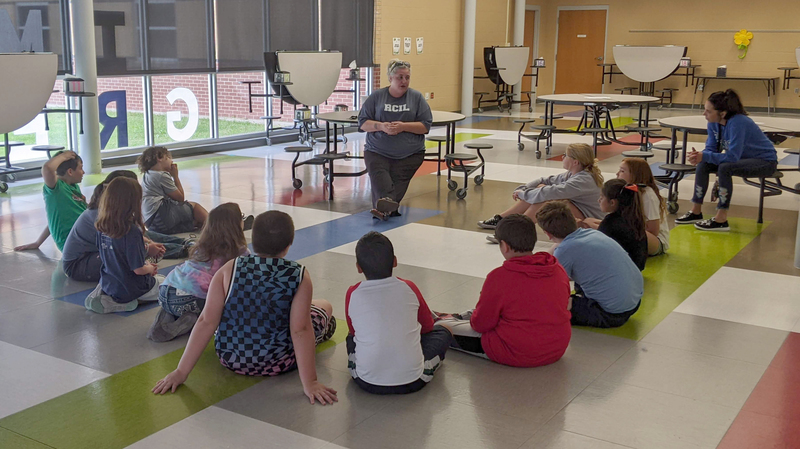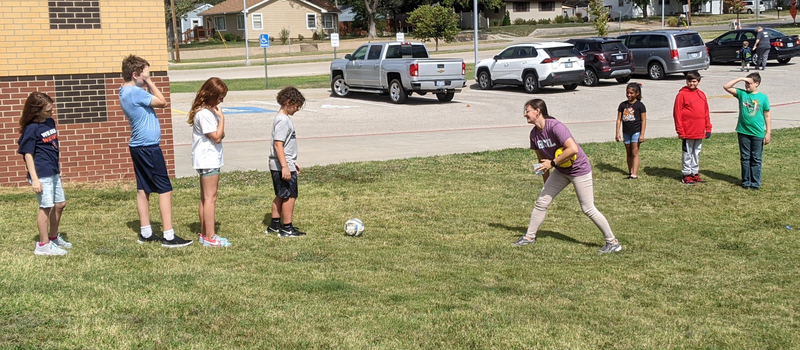Skelly fourth and fifth grade students participated in a Disability Awareness Day on September 22.
August’s social emotional awareness theme is empathy. Student Support Liaison Emma Schrag-Culbertson coordinated with the Resource Center for Independent Living to create a hands-on learning opportunity for students.

There were four stations that focused on identifying potential challenges and accommodations for people with disabilities. The intent was to encourage students to be understanding that some tasks may be simple to them, but a real challenge for someone else and that there are simple ways to make activities accessible for everyone to enjoy.
One station allowed students to practice maneuvering in a wheelchair. They were not allowed to use their legs to assist them while they wheeled across extension cords that were strung across the gym floor. They had to turn around at half court and roll back to the starting line. Students learned that something they could easily step over was not as easy to get around if they were in a wheelchair.

Students learned a few basics of sign language in the station focused on hearing loss. They discussed how not being able to hear might affect someone, such as not being able to hear warning bells or important safety instructions. They learned what they could do to communicate easier with someone who cannot hear well and that it is important to speak clearly, repeat yourself sometimes, and to be patient as the other person tries to understand what you are saying. Visual cues are really important for people with hearing loss.

There were two stations that centered around vision impairments. The outside station allowed students to play kickball using bead balls. These are special balls that are filled with items that rattle so players can hear where the ball is even if they cannot see it. Students learned how they can assist vision-impaired friends by using sounds to help guide them as they play the game.

The fourth station introduced students to Braille and encouraged them to think about how they would identify items in their home such as food versus dog food or identifying colors of clothing if they could not see. Canned foods can be especially tricky since smell and feel cannot be used to identify the contents without opening the can. They discussed using tactile cues such as rubber bands, braille labels, or assistive technology to help identify items.

What all of the lessons boil down to is that people with disabilities are the same as anyone else in terms of basic needs, wanting to feel included, desiring independence, and enjoying life. It is important to understand the challenges they face so we can all do our part to create inclusive, accessible environments for everyone to be able to participate and feel safe.
Empathy – Learning to understand how another person is feeling and supporting those emotions.


